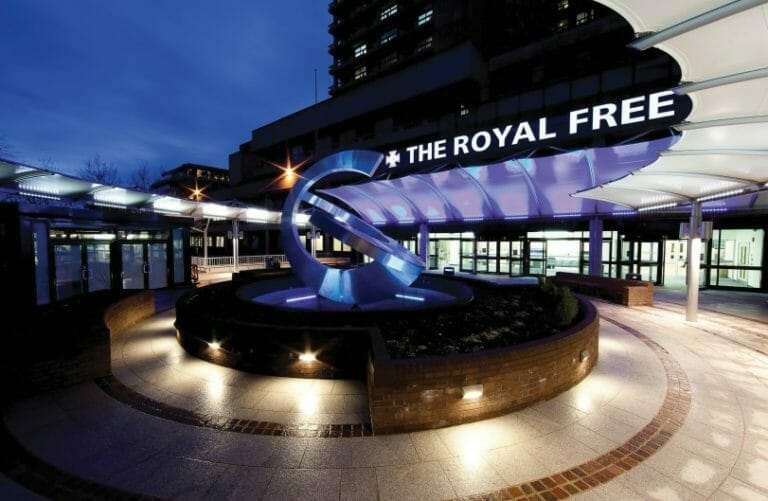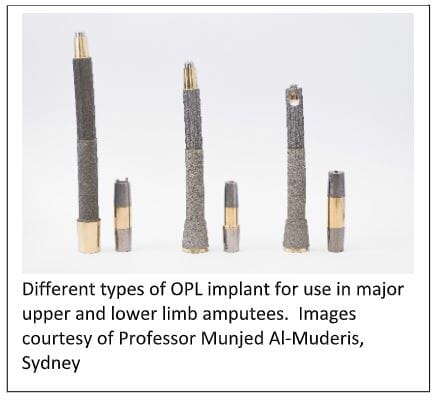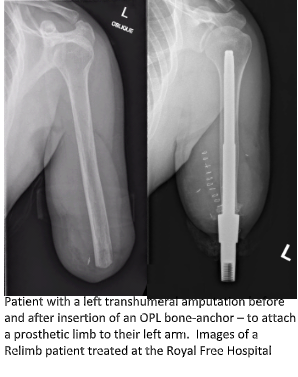Osseointegration (major limb amputees)

Our private Osseointegration (major limb amputees) services are provided at the Royal Free Hospital, Hampstead.
To find out more about our hospitals click here:
Osseointegration is a biological phenomenon that allows a metal implant inserted into the bone to become inseparably fused with the human skeleton. These implants are often referred to as bone-anchored implants and the terms “bone-anchor” and “direct skeletal fixation” are often used interchangeably.
As a result of recent advances in this technology, we are now able to offer upper and lower limb amputees a reliable and reproducible method for securing a prosthetic limb to their residual limb (stump) so that they do not have to endure the problems associated with a standard socket-mounted prosthesis.

The scientific discoveries underpinning this type of surgery were first made in the 1950’s. Therefore, this is a robust and well understood technology. The use of osseointegration of metal implants into the human skeleton has now become routine – mainly to provide secure fixation for dental implants.


In contrast, the use of osseointegration to improve the quality of life of amputees has been a more recent development which first started in Sweden in the 1990’s.
The advantages of Direct Skeletal Fixation (DSF) of a prosthetic limb compared to standard methods for securing a prosthetic limb are enormous:
- DSF using a bone-anchor, allows the mechanical axis of the residual limb to be as close to normal as possible. As a result, the amputee experiences fewer restrictions in the range of movement of the residual limb, more reliable control of the prosthesis attached to the residual limb and complete freedom from socket-related issues (e.g. ulcers, chaffing, sweating, slippage, smell and pain).
- Once fully integrated, DSF systems also enable amputees to don and doff their prosthesis, quickly and easily while many users report greater feedback from their prosthesis – a phenomenon described as osseoperception. In some cases, experienced users are even able to distinguish between walking on grass versus carpet!
- This highly innovative technique contributes to the amputees’ quality of life.
Initially, there were only a few centres and surgeons performing this type of surgery. However, since 2010, advances in our understanding of how the implants must perform and improvements in surgical technique and implant design have resulted in a massive increase in the number of amputees undergoing this treatment, worldwide.
Osseointegration
Get in touch
